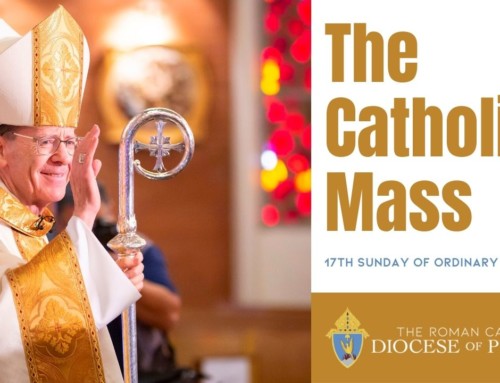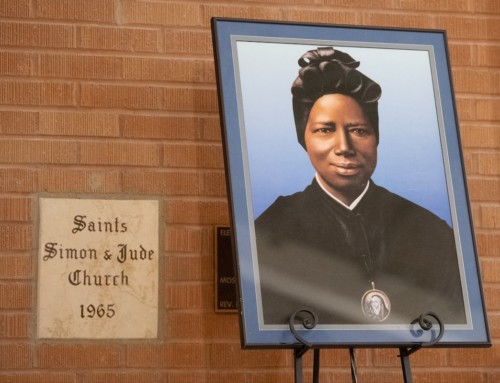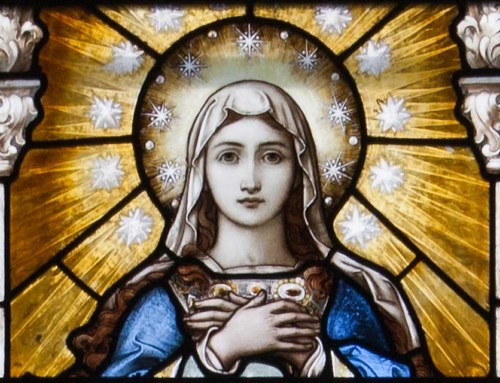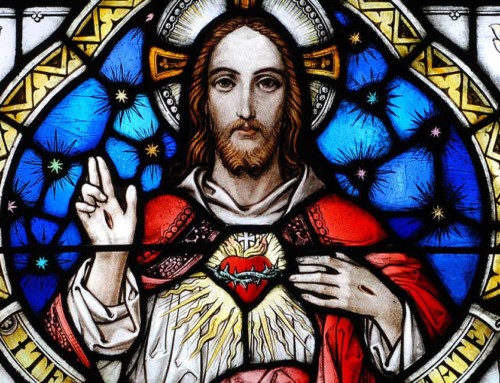Following is the prepared text from Bishop Olmsted’s homily for the Consecration of the New Altar at Nazareth House Seminary
August 25, 2020
For thousands of years, people of faith have erected altars where they could worship God and find healing and courage in His Name:
- Abraham constructed an altar near Shechem and another near Hebron (Cf. Genesis 12:7-8; 13:18).
- Moses built an altar to commune with God;
- King David erected an altar to ward off a plague (Cf. II Kings 24:25); and the Maccabees made a new altar to replace the one destroyed by their enemies. Our First Reading from the Book of Maccabees tells us that, when the altar was completed (1 Macc 4:56), “All the people prostrated themselves and adored and praised Heaven…”
May this beautiful chapel and altar be a place where each of us and those coming after us will worship with similar humility, adoration and love of Jesus.
An Altar stands at the focal point of a chapel, as a fountain of grace for a community, as a sign of God’s presence and even more as the place of (Cf. 1 Cor 10:16f), “participation in the Body and Blood of Christ.” Around this Altar of the Lord, He will speak words that you and I need to hear to live as His disciples and to love one another as brothers. For example, Jesus says (Mt 5:23f) , “If you bring your gift to the altar, and there recall that your brother has anything against you, leave your gift there at the altar, go first and be reconciled with your brother, and then come and offer your gift.”
In the Parable about the ten virgins—5 wise and 5 foolish, Jesus tells us that, at midnight, there was a cry (Mt 25:6), “Behold, the Bridegroom is here. Come out to welcome Him.” May these words resound in every heart that gathers around this altar for Mass and in every heart that comes here to pray—at midnight or in the Morning or Evening. Jesus is the Bridegroom of the Church, the Bridegroom of every soul; at every hour of the day or night, He is truly here! When you walk into this chapel for Mass, then, or for adoration or Lauds or Vespers, may you have a keen sense of expectancy, remembering that your thirst for Jesus is nothing compared to His thirst for you. Like a child, Jesus is standing on tiptoe waiting to greet you.
When you and I gather at an Altar for the Eucharist, we encounter the same love of Jesus that the Virgin Mary welcomed into her body at Nazareth and that she brought to the light of day in Bethlehem, and that she courageously supported as He suffered and died to redeem us at Calvary.
The love of Christ explains why, at the beginning of every Mass, and at the closing, too, the priest kisses the Altar. Such touching reverence is a reminder that the Altar is where God meets us in our deepest need. The Altar proclaims in stone the words of the Psalmist: “The Lord is my rock and my salvation; of whom should I be afraid?”
It is easy to see why, in every Catholic Church, the center of attention is not the choir, not the priest or congregation but the Altar of Sacrifice. We need consecrated Altars because we need spiritual cardiology; our hearts need conversion from sin and freedom from the lies of the Evil One. Without God’s grace, we are not able to change our own hearts or to change the hearts of others; but present here is the Holy One whose Sacred Heart can remove hearts of stone and replace them with hearts of flesh. That is what Jesus was doing on Calvary. That is what He does in every Confessional and at every Holy Sacrifice of the Mass.
At an Altar, Christ gives peace that the world cannot give. Here as well, Jesus destroys a false peace which the world entices us to buy at the cost of our integrity and even the loss of our souls. Keep in mind St. Paul’s words to the Corinthians (1 Cor 10:21), “You cannot partake of the table of the Lord and of the table of demons.”
The consecration of an Altar is no ordinary event. It makes a clear statement to the world that we believe in God, that we want to worship His Holy Name, and that we will never place strange gods before Him.
What takes place on an Altar impacts what happens at home and at school, what occurs in our room and what we do in the public square. Here, we become participants in the Body of Christ; we “bow down in worship” [and] “kneel before the Lord who made us.”




